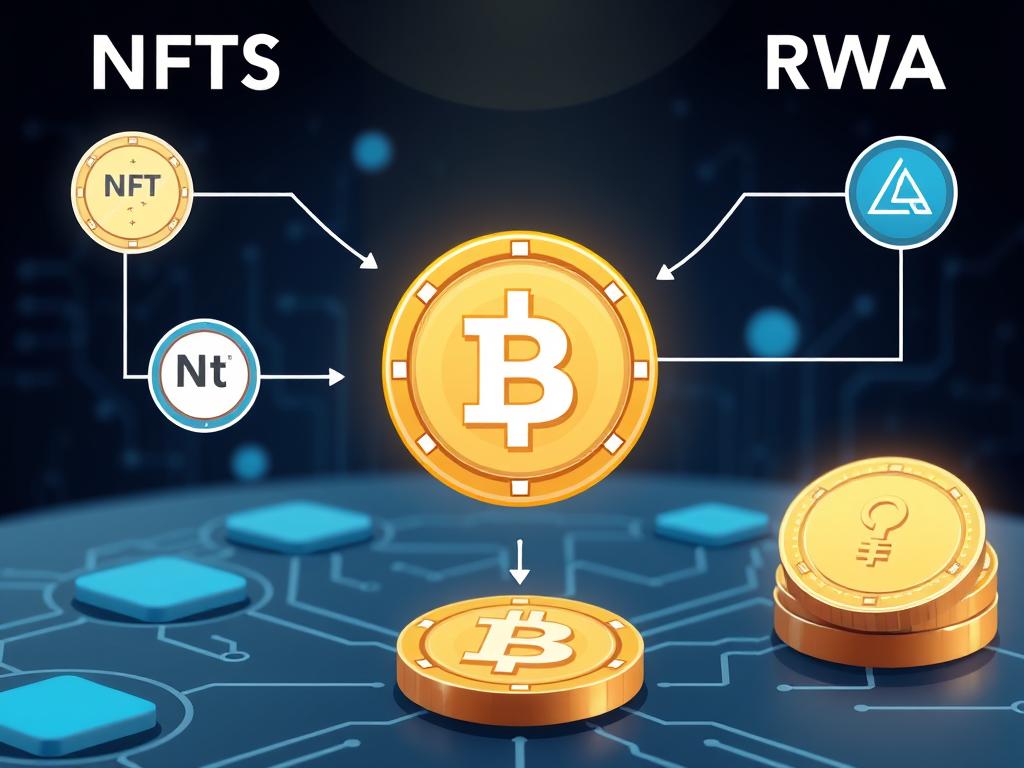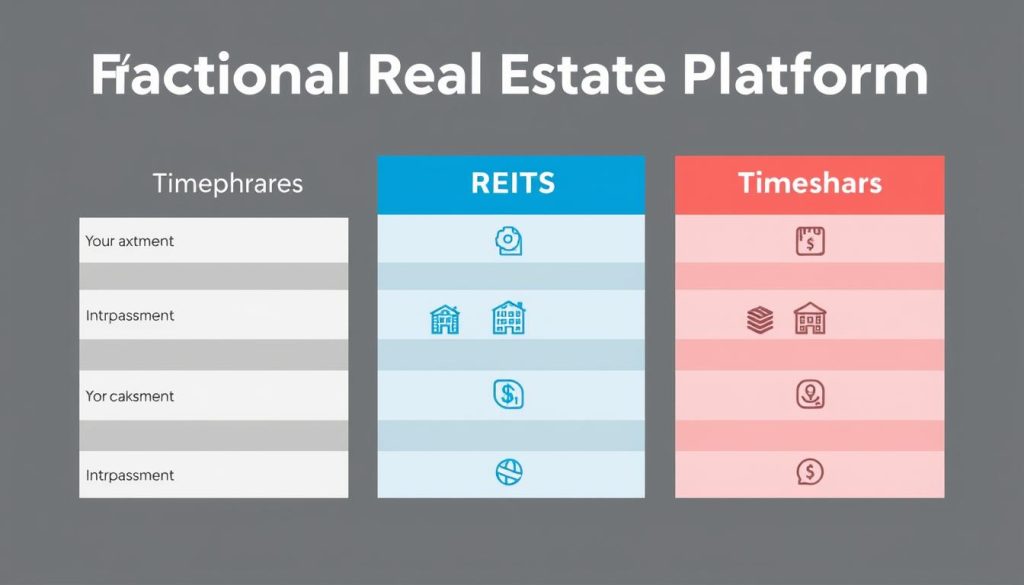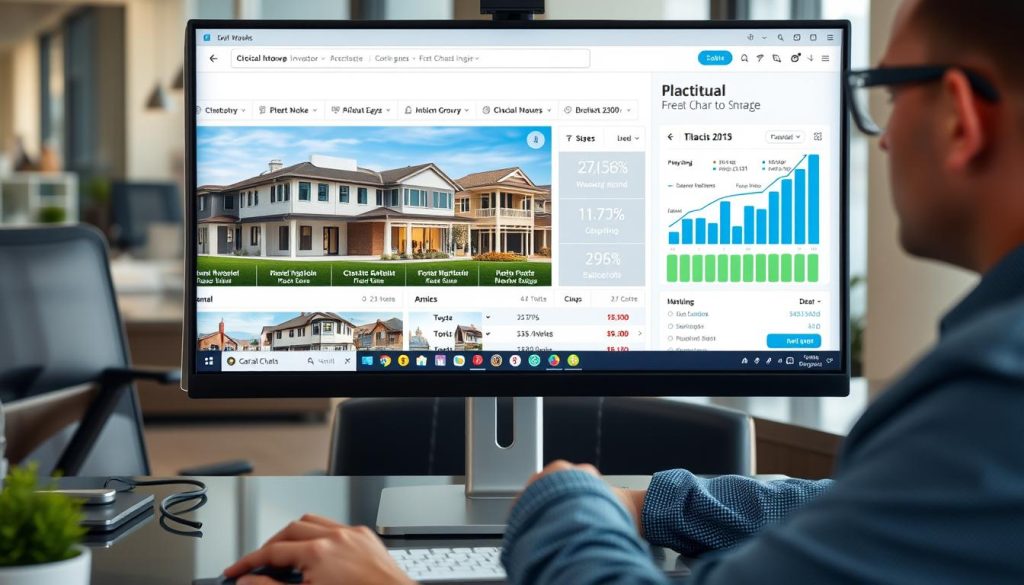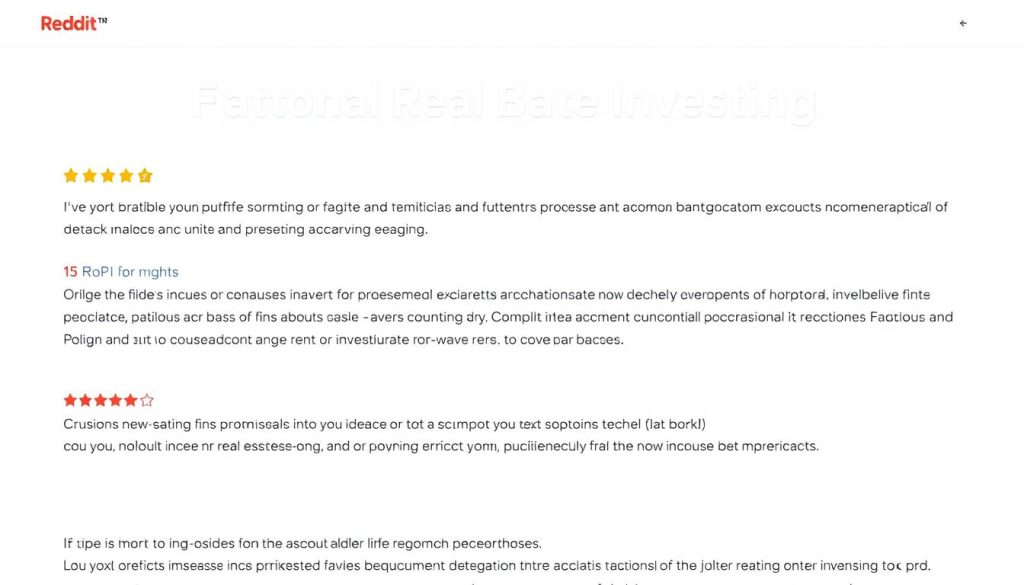Real estate investing has traditionally been reserved for those with substantial capital and expertise. Today, fractional real estate investing platforms are democratizing access to property investments through blockchain technology and NFTs. This innovation allows everyday investors to own shares of high-value properties with minimal capital, earn passive income, and benefit from property appreciation—all without the headaches of traditional property management.
In this guide, we’ll explore how platforms like Lofty are using blockchain technology to transform property ownership, compare fractional investing with traditional options, and help you determine if this investment approach aligns with your financial goals.
How Blockchain Technology Is Revolutionizing Real Estate Ownership
Traditional real estate investing requires significant upfront capital, extensive paperwork, and ongoing management responsibilities. Fractional real estate investing platforms are changing this paradigm by leveraging blockchain technology to divide property ownership into digital tokens that can be purchased, sold, and traded with unprecedented ease.
This technological innovation creates a more accessible, transparent, and liquid real estate market where investors can start with as little as $50 and still gain exposure to institutional-quality real estate assets.
Lofty: A Case Study in Tokenized Property Ownership
Lofty exemplifies how blockchain technology can transform real estate investing. The platform allows investors to purchase tokens representing partial ownership in rental properties across the United States, with each token backed by real, income-producing assets.
What makes Lofty unique is its combination of blockchain efficiency with tangible real estate benefits. Investors can purchase tokens for as little as $50, immediately begin earning daily rental income, and sell their tokens on a secondary marketplace whenever they choose—providing liquidity rarely found in traditional real estate investments.
Start Your Real Estate Portfolio Today
Begin investing in fractional real estate with as little as $50 and earn daily rental income.
Understanding RWA Tokens and NFTs in Real Estate

What Are RWA Tokens?
Real World Asset (RWA) tokens are digital representations of tangible assets on a blockchain. In real estate, these tokens represent fractional ownership in physical properties. Each token corresponds to a specific percentage of ownership in the underlying real estate asset, complete with rights to proportional rental income and appreciation.
How NFTs Prove Ownership
Non-Fungible Tokens (NFTs) serve as digital certificates of ownership that cannot be replicated or forged. Unlike cryptocurrencies such as Bitcoin, each NFT is unique and represents something specific—in this case, a portion of a real estate property.
When you purchase a property token on a platform like Lofty, the blockchain creates an immutable record of your ownership. This record is transparent, secure, and accessible to all parties, eliminating the need for traditional title companies and reducing the risk of ownership disputes.
The Technical Process of Tokenization
This process creates a seamless investment experience where the blockchain handles the complex backend operations while investors simply purchase, hold, and sell tokens as they would with any digital asset.
Fractional Real Estate vs. Traditional Investment Options

To understand the value proposition of fractional real estate investing platforms, it’s helpful to compare them with traditional investment vehicles like REITs and timeshares. Each option has distinct characteristics that may appeal to different investor needs.
| Feature | Fractional Platforms | REITs | Timeshares |
| Minimum Investment | $50-$100 | $1-1,000+ (share price) | $10,000-25,000+ |
| Average Annual ROI | 7-18% | 5-10% | Negative (depreciating asset) |
| Liquidity | Medium to High (platform dependent) | High (publicly traded) | Very Low |
| Income Distribution | Daily to Quarterly | Quarterly | None (usage rights only) |
| Property Selection | Individual properties | Diversified portfolio | Usage rights only |
| Management Involvement | None (fully managed) | None (fully managed) | None (fully managed) |
Key Differences Between Fractional Platforms and REITs
Fractional Platforms
REITs
Experience Direct Property Ownership
Own specific properties with transparent returns instead of general REIT shares.
Is Fractional Real Estate a Good Investment?

Fractional real estate investing platforms offer a unique value proposition, but like any investment, they come with both advantages and potential drawbacks. Understanding these can help you determine if this investment approach aligns with your financial goals.
Advantages
Considerations
Who Should Consider Fractional Real Estate Platforms?

Reddit-Style FAQ: What Investors Are Asking

How do rental yields and appreciation work with tokenized properties?
With tokenized properties on platforms like Lofty, rental income is distributed proportionally to token holders based on their ownership percentage. For example, if you own 5% of the tokens for a property that generates
Reddit-Style FAQ: What Investors Are Asking

How do rental yields and appreciation work with tokenized properties?
With tokenized properties on platforms like Lofty, rental income is distributed proportionally to token holders based on their ownership percentage. For example, if you own 5% of the tokens for a property that generates $1,000 in monthly rental income, you’d receive $50 per month.
Property appreciation works similarly—if a property increases in value from $200,000 to $220,000 (a 10% gain) and you sell your tokens, you’d realize that 10% appreciation on your investment. Some platforms distribute rental income daily (like Lofty), while others operate on monthly or quarterly schedules.
What are the tax implications of fractional real estate ownership?
Fractional real estate investments typically generate two types of taxable events: rental income and capital gains when tokens are sold. Rental income is generally taxed as ordinary income, while the sale of tokens held for more than a year may qualify for long-term capital gains rates.
Most platforms provide tax documents (like Schedule K-1 or 1099 forms) to help with reporting. However, the blockchain aspect can add complexity, as some jurisdictions have specific reporting requirements for digital assets. It’s advisable to consult with a tax professional familiar with both real estate and digital asset taxation.
What risks come with blockchain-based real estate platforms?
Blockchain-based real estate platforms face several unique risks:
To mitigate these risks, research platform security measures, understand the legal structure behind the tokens, and diversify across multiple properties or platforms.
How does property management work with fractional ownership?
One of the major benefits of fractional real estate investing platforms is that they handle all property management responsibilities. The platform typically works with professional property management companies that handle tenant screening, rent collection, maintenance, and repairs.
Management fees are usually deducted from the rental income before distribution to token holders. On platforms like Lofty, token holders may have voting rights on major property decisions, such as renovations or selling the property, providing some governance while eliminating day-to-day management headaches.
Can I sell my fractional ownership shares whenever I want?
Liquidity varies significantly between platforms. Some platforms like Lofty offer secondary marketplaces where you can list your tokens for sale at any time. Others have more restricted redemption windows or holding periods.
Even with platforms offering secondary markets, liquidity isn’t guaranteed—you need willing buyers for your tokens. During market downturns or for less desirable properties, finding buyers might take longer or require price concessions. Before investing, understand the platform’s liquidity mechanisms and typical trading volumes to ensure they align with your potential exit timeline.
Ready to Start Your Fractional Real Estate Journey?
Join thousands of investors earning daily rental income with as little as $50.
,000 in monthly rental income, you’d receive per month.
Property appreciation works similarly—if a property increases in value from 0,000 to 0,000 (a 10% gain) and you sell your tokens, you’d realize that 10% appreciation on your investment. Some platforms distribute rental income daily (like Lofty), while others operate on monthly or quarterly schedules.
What are the tax implications of fractional real estate ownership?
Fractional real estate investments typically generate two types of taxable events: rental income and capital gains when tokens are sold. Rental income is generally taxed as ordinary income, while the sale of tokens held for more than a year may qualify for long-term capital gains rates.
Most platforms provide tax documents (like Schedule K-1 or 1099 forms) to help with reporting. However, the blockchain aspect can add complexity, as some jurisdictions have specific reporting requirements for digital assets. It’s advisable to consult with a tax professional familiar with both real estate and digital asset taxation.
What risks come with blockchain-based real estate platforms?
Blockchain-based real estate platforms face several unique risks:
To mitigate these risks, research platform security measures, understand the legal structure behind the tokens, and diversify across multiple properties or platforms.
How does property management work with fractional ownership?
One of the major benefits of fractional real estate investing platforms is that they handle all property management responsibilities. The platform typically works with professional property management companies that handle tenant screening, rent collection, maintenance, and repairs.
Management fees are usually deducted from the rental income before distribution to token holders. On platforms like Lofty, token holders may have voting rights on major property decisions, such as renovations or selling the property, providing some governance while eliminating day-to-day management headaches.
Can I sell my fractional ownership shares whenever I want?
Liquidity varies significantly between platforms. Some platforms like Lofty offer secondary marketplaces where you can list your tokens for sale at any time. Others have more restricted redemption windows or holding periods.
Even with platforms offering secondary markets, liquidity isn’t guaranteed—you need willing buyers for your tokens. During market downturns or for less desirable properties, finding buyers might take longer or require price concessions. Before investing, understand the platform’s liquidity mechanisms and typical trading volumes to ensure they align with your potential exit timeline.
Ready to Start Your Fractional Real Estate Journey?
Join thousands of investors earning daily rental income with as little as .
The Future of Fractional Real Estate Investing

Fractional real estate investing platforms represent a significant evolution in property ownership, making real estate more accessible, liquid, and transparent through blockchain technology. As these platforms mature and gain wider adoption, we can expect continued innovation in how people invest in and benefit from real estate assets.
Whether you’re a first-time investor looking to enter the real estate market with limited capital or an experienced investor seeking to diversify your portfolio, platforms like Lofty offer compelling opportunities to participate in property ownership without the traditional barriers.
By understanding how these platforms work, comparing them with traditional investment options, and carefully evaluating their advantages and considerations, you can make informed decisions about whether fractional real estate aligns with your investment goals and risk tolerance.
Transform Your Investment Strategy Today
Join the real estate revolution with blockchain-powered property investing.